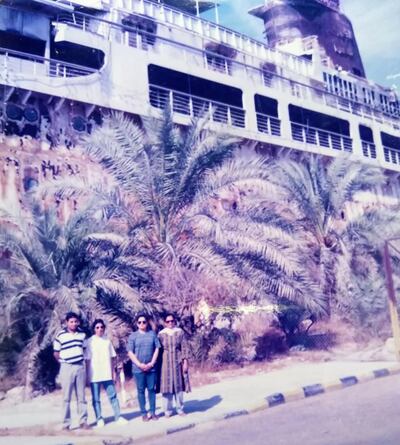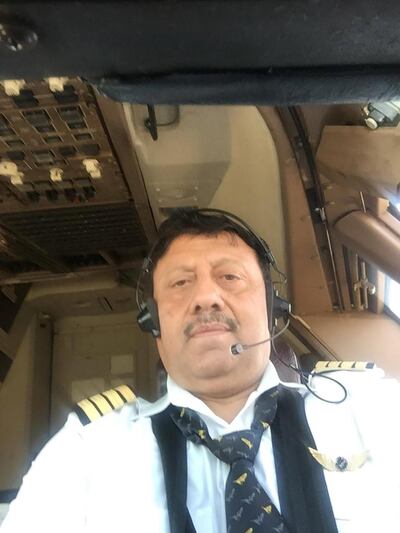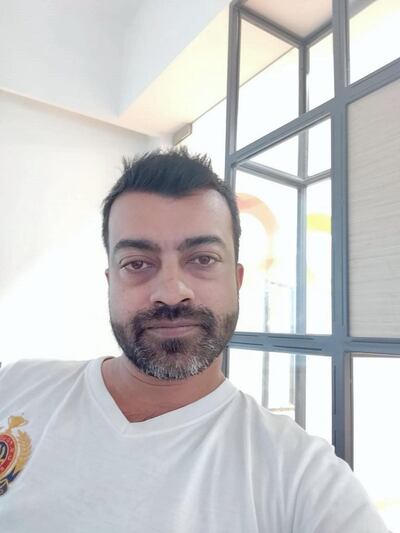Moortaza Borsadi fondly remembers his three precious bicycles, his school and the friends he left behind in Kuwait after the tiny Gulf nation was invaded by Iraq three decades ago.
Mr Borsadi, then 15 years old, was among tens of thousands of Indians stranded in Kuwait after 100,000 Iraqi Republican Guards and 700 tanks rolled into the neighbouring emirate on August 2, 1990, overwhelming the 16,000 Kuwaiti soldiers and occupying the country in two days.
"That morning I woke up to empty streets and loud noise…we ran to the terrace and saw a fleet of 50-60 helicopters hovering in the sky like a swarm of bees. We were clueless [about] what was happening until we saw Iraqi flags," Mr Borsadi told The National.
Shocked and confused, Kuwait's largest expat community finally grasped the seriousness of the situation after Iraqi leader Saddam Hussein announced the annexation of the oil-rich country.
The Indian community found themselves destitute as trade and businesses shut down amid widespread looting and destruction of property.
“My father Nuruddin Borsadi emigrated to Kuwait as an ambitious 25-year-old from Mumbai. For 30 years he ran a novelty shop selling Indian jewellery and built a comfortable life for us, but one day the shop was blown up by Iraqis. My father’s hard work was burnt to ashes,” said Mr Borsadi, who runs an advertising film production house in Mumbai.
As the situation continued to deteriorate, panicked Indians urged New Delhi to rescue them.
Over the space of about two months, more than 170,000 Indians were flown home on 488 flights operated by state-owned Air India and Indian Airlines.
Air India is still listed in the Guinness Book of World Records for the most people rescued by a civil airline. The operation became the plot for the hit 2016 Bollywood film Airlift.
"It was a sudden emergency and we did not know what we were getting into. It was a war zone, we had fears that we could be shot down,” said Rita Pradeep Nair, a member of the cabin crew aboard the first evacuation flight.
The Indian foreign minister at the time, Inder Kumar Gujral travelled to Baghdad to ask Saddam Hussein’s assistance in the repatriation of Indian citizens from Kuwait.
Gujral went to Washington in the first week of August 1990 to prevail upon the Americans not to launch an attack on Kuwait to oust Iraqi forces in order to ensure the safety of Indians, but US officials declined his request.
He then went to Baghdad, first meeting Iraqi Foreign Minister Tariq Aziz on August 20 and two days later to Hussein to seek safe passage for Indians to fly to their homes, according to Gujral's autobiography Masters of Discretion in which he writes, "Hussein hugged me when I went to greet him".
Pictures of the meeting in which Hussein was wearing his trademark Khaki uniform with a pistol in a holster left New Delhi embarrassed internationally.
As Baghdad ran short of supplies and did not have enough provisions to support tens of thousands of Indian refugees and the United Nations did not want to help Iraqi government with food supplies under US pressure, New Delhi and Baghdad decided to allow Indians to use Iraq as a transit to reach Jordan.
Jordan emerged as a neutral country where the UN, Red Cross and other international relief agencies helped set up temporary camps for Indians before they flew to their homes.
Initially, the Indian government used military aircraft to airlift hundreds of Indians from Kuwait, but as these planes needed special clearance from several countries on flight routes, New Delhi decided to use civilian planes to airlift its stranded nationals from Kuwait.
But, within days, the UNSC passed resolutions barring civilian flights from operating from Iraq and Kuwait, making Jordan the only option for the rescue mission.
Ms Nair, 64, said they were briefed about the mission just hours before they took off for Amman.
The sight that met her there is etched in her memory, she said.
"I saw women with children, some of whom were not wearing slippers, had not eaten for days ... I was totally shattered,” said Ms Nair, who took part in six rescue flights.
The operation was challenging as many of the evacuees did not have passports and flights were operating without any ground support at the Amman airport because it was an emergency operation devoid of airline support.
During one of the sorties, Ms Nair’s plane was stuck on the tarmac for 30 hours awaiting clearance.
"But people on board were happy to be going back home despite losing everything,” she said.
Air India pilot Captain Naresh Kumar Beri, who flew to Amman in the following days, said it was a race against time as the airport was overrun by people trying to fly home amid fears of war.
"People were all terrorised. It was a different experience because we had time constraints and we had to carry passengers as fast as possible,” Mr Beri, 64, said.
Following several risky evacuation flights from Kuwait, New Delhi sought permission from Jordan to fly to Amman from Basra as many Indians had started fleeing the country by land amid brutal repression by Iraqi forces against any Kuwaiti resistance.
Along with thousands of other Indians, Mr Borsadi fled to Amman with his mother and uncle, travelling in buses organised by New Delhi and wealthy Indian businessmen. His father and brother had travelled to India just a week before the invasion to attend a funeral.
“We stayed for four days at a Red Cross camp in Amman. We had left everything behind. I just carried a VCR player – it was my most prized possession,” said Mr Borsadi.
“I did not want to come back to India because my studies would be affected and I would miss my friends. It was an emotional time but we didn't have a choice,” he said.














